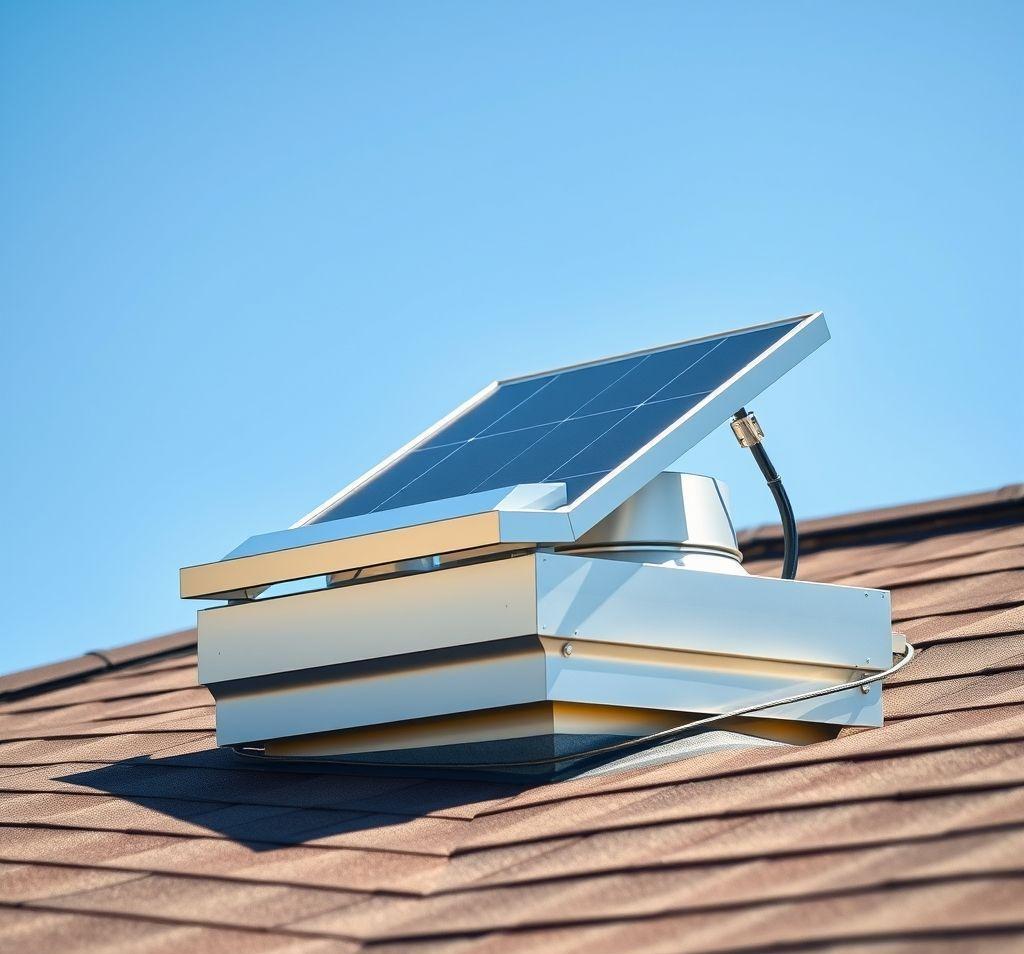Cool Your Home Naturally: Are Solar-Powered Attic Fans an Effective Eco-Friendly Solution for Reducing Heat?
As temperatures rise, homeowners seek eco-friendly and cost-effective ways to keep their homes cool. Solar-powered attic fans have emerged as a popular option. This article delves into the benefits, installation considerations, and performance of these systems, helping you determine if they are the right choice for your home.
The Benefits of Solar Attic Ventilation
Solar attic fans offer a multitude of advantages. Primarily, they significantly reduce attic temperatures by exhausting hot air that accumulates under the roof. This, in turn, lowers your home’s overall temperature, reducing the strain on your air conditioning system and potentially lowering energy bills. Beyond cost savings, solar attic fans are environmentally friendly, utilizing a renewable energy source – sunlight – to operate. This reduces your carbon footprint and reliance on fossil fuels. Furthermore, by removing excess moisture from the attic, these fans can help prevent mold and mildew growth, safeguarding your home’s structural integrity.
Installation Considerations
Proper installation is crucial for optimal performance. Factors to consider include fan size, number of fans needed, and attic venting. It’s essential to choose a fan that is appropriately sized for your attic’s square footage. Consulting with a professional installer is recommended to determine the correct fan size and number of units required. Additionally, adequate intake venting is necessary to allow fresh air to enter the attic, facilitating proper air circulation. The fan should be positioned strategically to maximize airflow and avoid obstructions. While DIY installation is possible, professional installation ensures correct wiring and mounting, maximizing the fan’s lifespan and effectiveness. Consider local building codes and permit requirements before commencing installation.
Performance and Effectiveness
The effectiveness of solar attic fans depends on several factors, including sunlight availability, attic insulation, and climate. In sunny climates, these fans can significantly reduce attic temperatures, leading to noticeable energy savings. However, their performance may be limited on cloudy days or in heavily shaded areas. Adequate attic insulation is also crucial, as it prevents heat from transferring into the living space. Regular maintenance, such as cleaning the solar panel and lubricating the fan motor, ensures optimal performance and longevity. Some models come with features like adjustable thermostats and humidity sensors, allowing for customized operation based on specific needs.
Cost and Return on Investment
The initial cost of a solar attic fan system can vary depending on the size, features, and installation complexity. While the upfront investment may be higher than traditional electric fans, the long-term savings in energy costs and potential tax credits can offset the initial expense. The return on investment (ROI) will depend on factors such as energy consumption, climate, and electricity rates. To determine the potential savings, consider using online calculators or consulting with an energy efficiency expert. Furthermore, the increased home value resulting from energy-efficient improvements can be a significant long-term benefit.
Conclusion
Solar-powered attic fans present a compelling eco-friendly solution for reducing home heat and energy consumption. Their benefits extend to lowering energy bills, preventing moisture damage, and minimizing your carbon footprint. While installation considerations and performance factors must be taken into account, the long-term advantages and potential return on investment make them a worthy consideration for homeowners seeking sustainable and cost-effective cooling solutions. By carefully evaluating your needs and consulting with professionals, you can determine if a solar attic fan is the right choice for creating a more comfortable and energy-efficient home.



